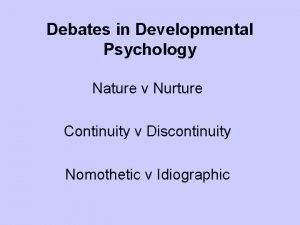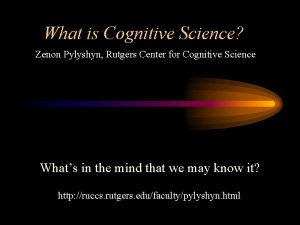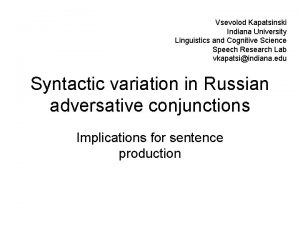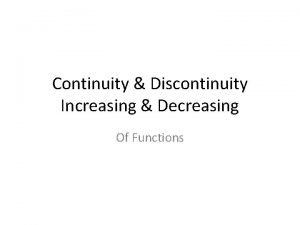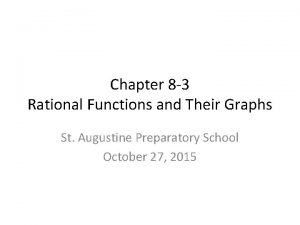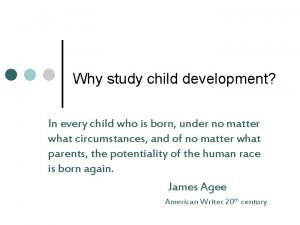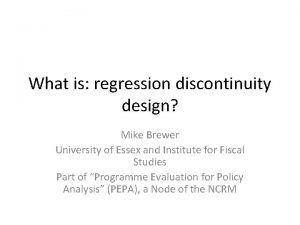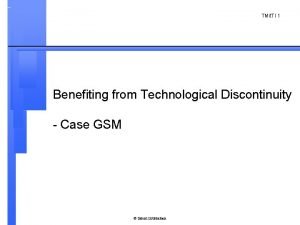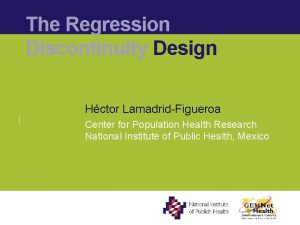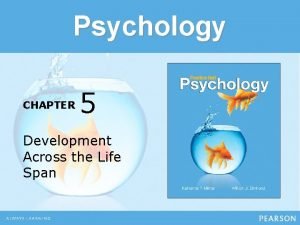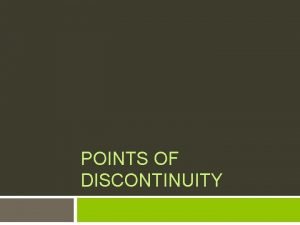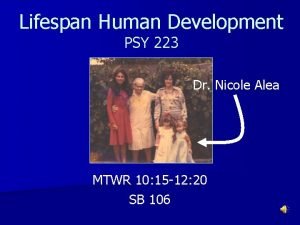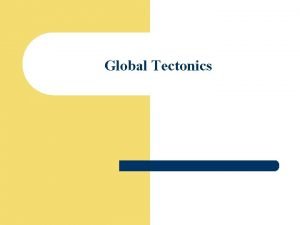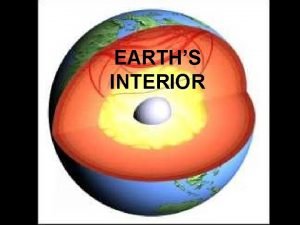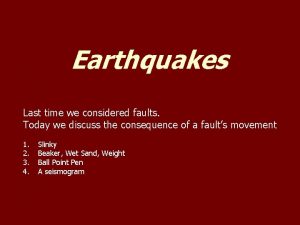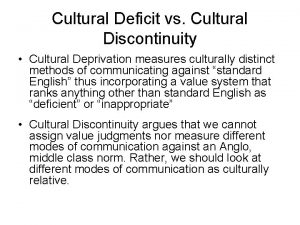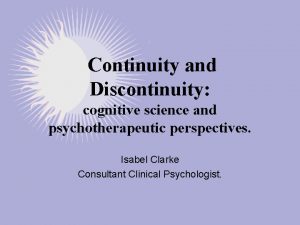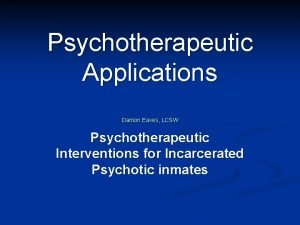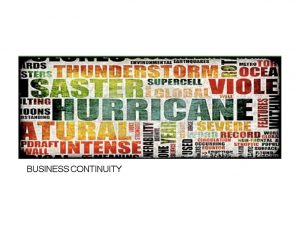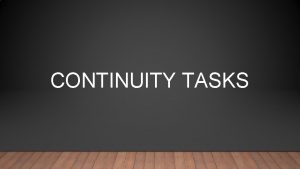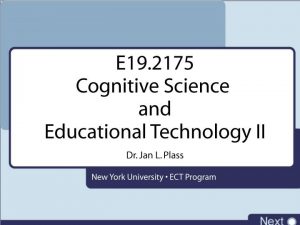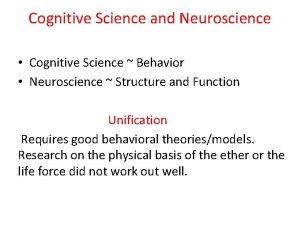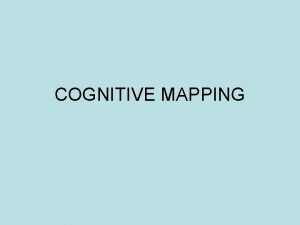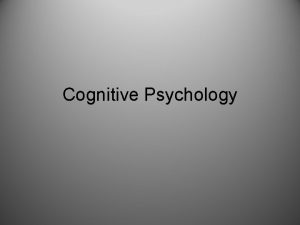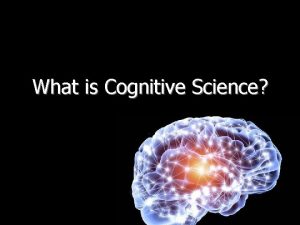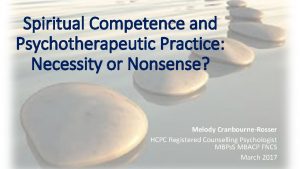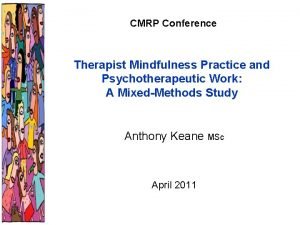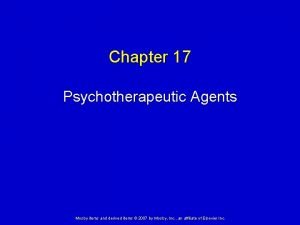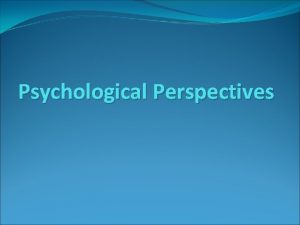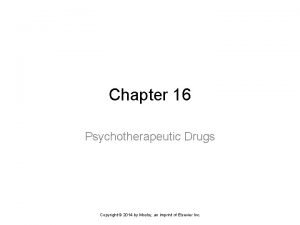Continuity and Discontinuity cognitive science and psychotherapeutic perspectives






















- Slides: 22

Continuity and Discontinuity: cognitive science and psychotherapeutic perspectives. Isabel Clarke Consultant Clinical Psychologist.

What I hope to cover: • Outline the discontinuity hypothesis • Ground this in cognitive theory • Implications for therapy – – Third Wave Cognitive therapy – my additions to CBT for psychosis • Wider Vision of the person

Instead of psychosis and spirituality, I propose two ways of operating in the world: • The everyday • The transliminal Both of these are available to all human beings. THE DISCONTINUITY exists between these two states.

The Everyday • Ordinary • Clear limits • Access to full memory and learning • Precise meanings available • Separation between people • Clear sense of self • Emotions moderated and grounded The. Transliminal • Numinous • Unbounded • Access to ordinary knowledge/memory is patchy • Connections abound - or all is meaningless • Self: lost in the whole or supremely important • Emotions: swing between extremes or absent

Looking at this cognitively • Two complementary approaches • Kelly’s Personal Construct Theory • Interacting Cognitive Subsystems (Teasdale and Barnard).

Constructs • Are based on past experience/memory • New experience is filtered through our constructs • They colour and help to define our world • Each person’s construct system is unique to them.

Transliminal Experience = operating Beyond the Construct System • No means of anticipating or discriminating • A state without boundaries • Both/and - two contradictory things can be simultaneously valid

Beyond Constructs and Boundaries • Liberating; ecstatic; one with the universe – BUT • Mind is no longer private • Open to any influence or “insertion” • Loss of the construct “safe/dangerous” - danger can come from anywhere. • The boundary between inner and outer is lost.

Interacting Cognitive Subsystems: Teasdale & Barnard 1993. • An information processing model of cognition, developed through extensive research into memory and limitations on processing. • 9 subsystems, each with its own type of coding. • Some deal with sensory perception - auditory and visual • Some deal with language processing • There are two higher order systems: the propositional and the implicational.

Interacting Cognitive Subsystems. Body State subsystem Implicational Memory Auditory ss. Visual ss. Propositional subsystem Propositional Memory Verbal ss.

Important Features of this model • Our subjective experience is the result of two higher order processing systems interacting – neither is in overall control. • Each has a different character, corresponding to “hot” and “cool” cognition. • The IMPLICATIONAL Subsystem manages emotion – and therefore relationship. • Presumabley, the verbal, logical, PROPOSITIONAL ss. gives us our sense of individual self.

Two Ways of Knowing • Good everyday functioning = good communication between implicational/relational and propositional • At high and at low arousal, the relational ss becomes dominant • This gives us a different quality of experience – one that is both sought and shunned. • Managing that good communication is key – Teasdale was a pioneer in introducing Mindfulness to CBT.

I suggest • Both ways of encountering reality are equally valid • Both are intrinsically incomplete • Human beings have always honoured the transliminal • Made space for the sacred.

Advantages of this model • It clarifies the characteristics of the transliminal; – both/and, not either/or – paradox – numinosity • It brings psychosis into the realm of universal human experience • It helps to explain common psychotic experiences, such as: – thought insertion – distortions in the sense of self • It raises interesting questions around scientific enquiry into the transpersonal.

“Third Wave” Cognitive Therapies • Developments in CBT as it tackles personality disorder, psychosis etc. • Therapeutic relationship important • Past history is significant • Change lies not so much in altering thought to alter feeling, but in altering the person’s relationship to both thought and feeling • Mindfulness is a key component. • Role of mindfulness in managing the threshold between the two ways of knowing.

“Third Wave” – term coined by Hayes (Acceptance & Commitment Therapy) • Kabat-Zinn. Applied mindfulness to stress and pain. • Segal, Teasdale & Williams. Mindfulness Based Cognitive Therapy (relapse in depression. ) • Linehan. Dialectical Behaviour Therapy (BPD) • Chadwick. Mindfulness groups for voices. • Hayes

Parallel Developments in other modalities • Bateman and Fonagy – Mentalisation. Promotes theory of mind, collaboratively and through skills training. • Developments in Cognitive Analytic Therapy for severe personality disorders.

DIALECTICAL BEHAVIOUR THERAPY: Linehan’s STATES OF MIND EMOTION REASONABLE WISE MIND IN THE PRESENT IN CONTROL

Working with Psychosis using the Discontinuity Model • Managing arousal – the transliminal is accessible at both high and low arousal • Validate the experience • Validate the feeling • Persuasion to join “shared reality” • “Sensitivity” – normalisation based on Claridge’s work on schizotypy.

The Relational Mind • Developmentally, we make sense of ourselves only in relation to others. • We grow, and are moulded, through relationship – all relationship. • The self sufficient, atomistic, mind is an illusion • Our verbal, propositional ss. sets a limit on what we can know precisely • We can reach out in relationship beyond that limit.

Web of Relationships In Rel. with earth: non humans etc. primary care-giver In Rel. with wider group etc. Self as experienced in relationship with primary caregiver Sense of value comes from rel. with the spiritual

• Spiritual Crisis Network. www. spiritualcrisisnetwork. org. uk My website (publications) www. scispirit. com/Psychosis_Spirituality/ Chris Clarke Ed. 2005. ” Ways of Knowing: science and mysticism today”. Exeter: Imprint Academic. Clarke, I. Ed. (2001) Psychosis and Spirituality: exploring the new frontier. London: Whurr.
 Discontinuity psychology examples
Discontinuity psychology examples Early experience vs later experience debate
Early experience vs later experience debate Absolute continuity implies uniform continuity
Absolute continuity implies uniform continuity Cognitive and non cognitive religious language
Cognitive and non cognitive religious language Nelson science perspectives 9 chapter 12
Nelson science perspectives 9 chapter 12 What s your favorite subject
What s your favorite subject Tri level hypothesis example
Tri level hypothesis example Kognitif sains
Kognitif sains Indiana university cognitive science
Indiana university cognitive science Removable and nonremovable discontinuity
Removable and nonremovable discontinuity Removable and nonremovable discontinuity
Removable and nonremovable discontinuity Discontinuous development psychology
Discontinuous development psychology Regression discontinuity
Regression discontinuity Technology discontinuity
Technology discontinuity Regression discontinuity
Regression discontinuity Piaget second stage
Piaget second stage Vertical asymptote
Vertical asymptote Discontinuity of development
Discontinuity of development Discontinuous development psychology
Discontinuous development psychology Mohorovicic discontinuity
Mohorovicic discontinuity Mohorovicic discontinuity
Mohorovicic discontinuity Fault
Fault Cultural discontinuity
Cultural discontinuity
